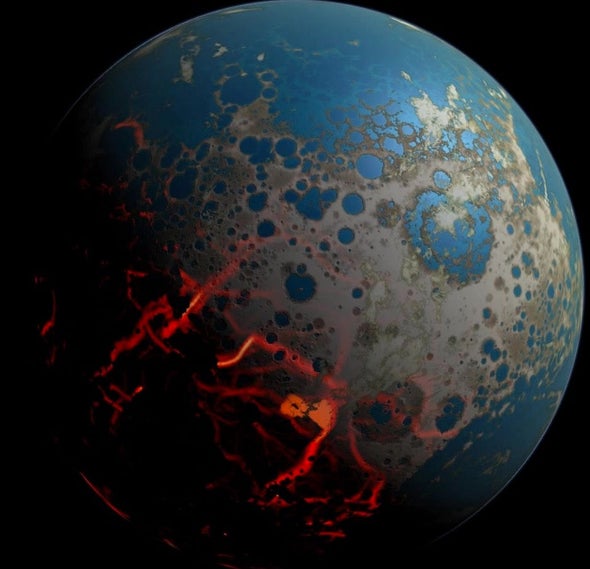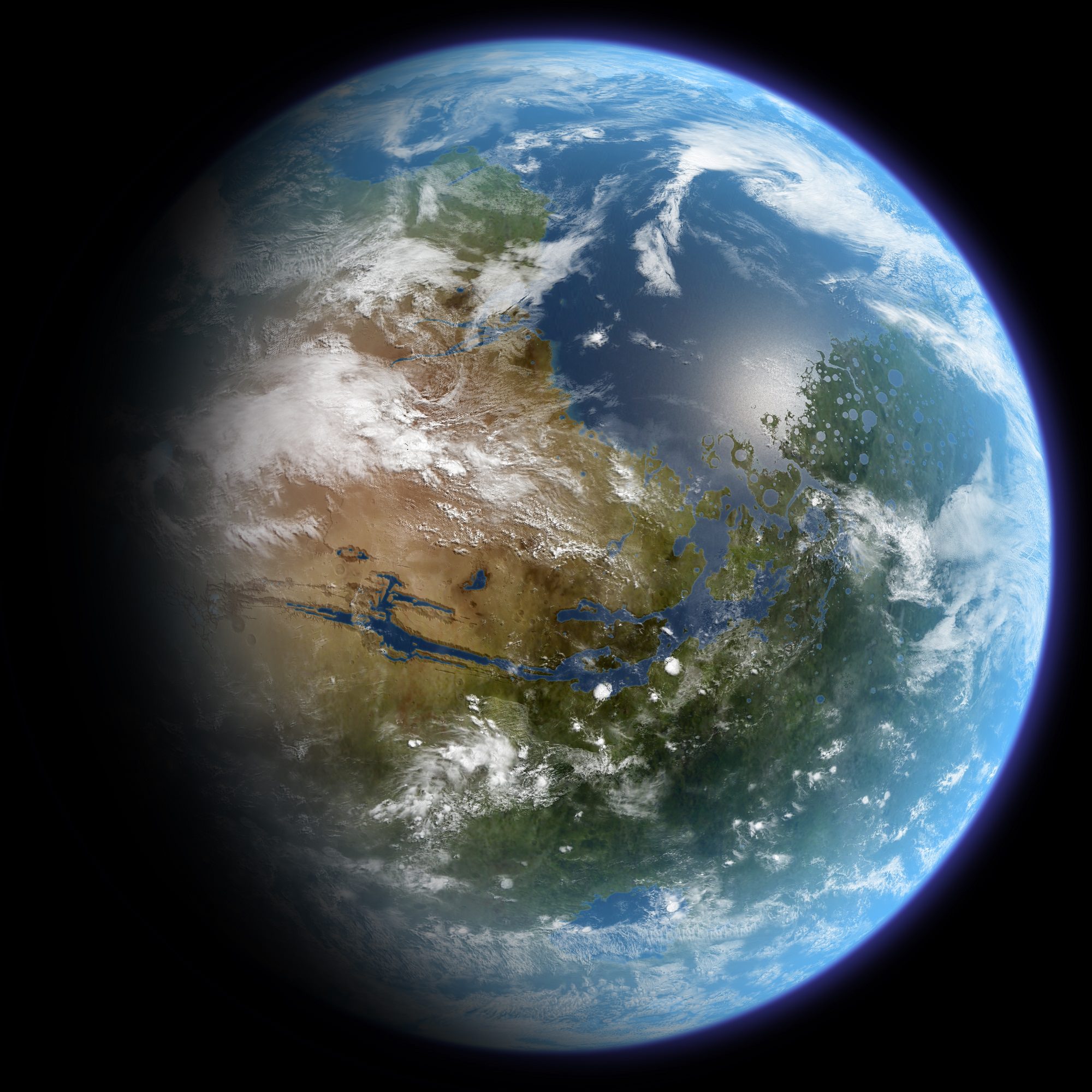How do atmospheres form naturally, could we create one artificially, and how in becoming a multi-planetary species would that change the trajectory of the human race.
For our entire existence, humans have been confined to our one and only planet. In the last century, however, we have begun venturing into space; trying to find out what lies on other planets and if we are alone in the universe. We do this after all the land on earth has been settled by humans, so as we started exploring the vast emptiness of other planets, visionaries such as Elon Musk have theorized colonizing other planets. This would be a massive and complex process, and in my opinion, one of the greatest challenges would be to create an atmosphere. What I wondered, is how atmospheres form naturally, if we could create one artificially, and how becoming a multi-planetary species changes the trajectory of the human race.
Looking back to our own planet millions of years ago, Earth was unhabitable to life due to the heat and makeup of the scorched earth; filled with enormous volcanos that emitted massive amounts of methane, hydrogen sulfide (hydrocarbons), and 200 times the amount of carbon dioxide than in the levels seen today.
An artistic conception of early Earth showing the planet’s surface impacted by asteroids
This all changed as the cooling period brought about the solidification of the earth, thus letting water collect on the planet. As water pooled and created oceans, minuscule cyanobacteria in the ocean used photosynthesis as energy to survive. In doing this, they converted the plentiful carbon dioxide, sunlight, and water into free oxygen. This oxygen in the air is new to our planet and would become an essential pillar to life on land. As the oxygen started to interact with other gases; hydrocarbons which created the ozone are responsible for shielding us from the sun’s radiation, and the haze of the methane gas which was cleared after the introduction of free oxygen thus, leading to the blue skies that we know today. This oxidizing process is how we got to the plentiful oxygen, and the carbon-capturing plants that work in the ecosystem and are fundamental to life as we know it.
We know that life on earth is naturally sustainable and that nitrogen, as well as carbon dioxide, oxygen, and the releasing of these to a place, are the building blocks of life. If other planets were to be used as future homes for our species, these natural processes would have to be replicated artificially. “Terraforming” is a process in which, we engineer another planet to look like earth, and to sustain life. The primary focus of terraforming is to change the atmosphere to suit human life, and it requires a few ingredients. First off, we would need to create the greenhouse gases that allow a planet to trap the heat on the earth. On earth, we have too much of these “greenhouse gases” which
A visualization of how greenhouse gases trap the heat from the sun
trap the gases too well in our atmosphere. These gases are creating a system in which the sun’s rays are trapped to a point where the earth is warming and the climate is changing causing irreparable harm to the environment. Most unhabitable planets, however, do not have the appropriate amount for humans. We would either have to kickstart or slow down/reverse the greenhouse effect. Whether that be by a version carbon capture which pumps CO2 into unfree spaces, or by artificially finding a way to pump or release gases into the atmosphere. Another hurdle would be finding oxygen and nitrogen gas to be at suitable levels for us. This could be by a similar method as CO2, but it all depends on the levels of a specific planet. This is all hypothetical, but there is a planet on which there are hopes that terraforming could be commencing in our lifetimes.
A hypothetical blue and green Mars
The red planet – Mars may not always have been all that red. In many ways, Mars is remarkably like Earth. Both planets are terrestrial and have a similar geological makeup. The planets both have a core, mantle, and crust. Another similarity that was recently discovered is the fact Mars has polar ice caps. This enforces a previous theory that at one point mars held life. What happened is a mystery, but the presence of water on the planet means the planet is evermore alike earth than previously thought. The significance is if humans wanted to and had the capacity to terraform a planet mars would be the first choice for many people. The problem with mars is that it is too cold. Compared to earth, the atmosphere is 100 times thinner, which means the planet is extremely cold averaging –63 degrees Celsius. What many people are suggesting is to find a way to melt the icecaps. This would release carbon dioxide into the atmosphere which would accelerate the greenhouse effect. This, however, would not come close to being enough carbon in the atmosphere. Even with our current technologies, a NASA study concluded that “Mars does not retain enough carbon dioxide that could practically be put back into the atmosphere to warm” The are similar problems with the balance of nitrogen and oxygen levels, yet that does not mean one should give up hope. We can always store gasses and use current fuel reserves to burn on mars, but this could be one of humanity’s most lasting tests yet.
Elon musk stating in a 2018 commentary that earth is on a trajectory for an “eventual extinction” The main theory of how the dinosaurs went extinct is by an enormous meteor crashing into the earth. The rationale is that the same thing could and will happen to humans unless we can avoid extinction. Becoming a multi-planetary species may allow us to not have all our eggs in one basket. By sustainably living on more than one planet if an extinction-level event occurs on one planet, there are still humans on another that survive and could eventually repopulate. This would ensure the continued survival of our species and maybe our best hope for the future of humans. The last and most complicated obstacle has still to be addressed, however.
Should we actually do this?
Mars is filled with natural beauty from volcanos 3 times larger than Mount Everest, to canyons and valleys. 
A rendering of the largest mountain on Mars, Olympus Mons
Changing the physiological features or even detonating nuclear weapons may not be ethical because we are changing pristine beauty for our own selfish reasons. On top of that, what does that mean for the problems on earth? Are we simply to continue polluting our atmosphere and ignoring the fact that humans have not found a way to live sustainably on our own planet let alone another? How could cooperation work while countries are working in their own self-interest and threatening war without these stakes? Running away from our problems does not change the fact that they are ever more present. The question may not be if we have the current technology to do so, but if we should do so.
I have learned a lot about the atmosphere and how it is formed. The greenhouse effect is a primary, but not the only technological hurdle to getting to earth. We also must find a way to oxidize the planet using plants and humans, but we are not yet equipped to do so. All the hypothesizing is fascinating, but we may not be able to put it into practice for centuries to come.



That’s actually a really interesting topic Ethan.
It’s very interesting that we figured out what needs to be there for an atmosphere but we just don’t have the current technology for it.
But I do agree with you on the fact that we need to focus on our own planets issues as we are not even close to ready to start our colonization of the stars.
Great question Ethan!
Great job making such a meaningful question! Your research was detailed and the post was really well written. I thought it was interesting how you questioned whether it is ethical to change the physiological features of Mars. I also liked how you put pictures throughout the whole post.
That’s very interesting, you talked about how earth gained its atmosphere and touched up oh how mars could regain its atmosphere, I liked that you questioned the morality of changing an entire planet based on our ideals and the possible outcomes.